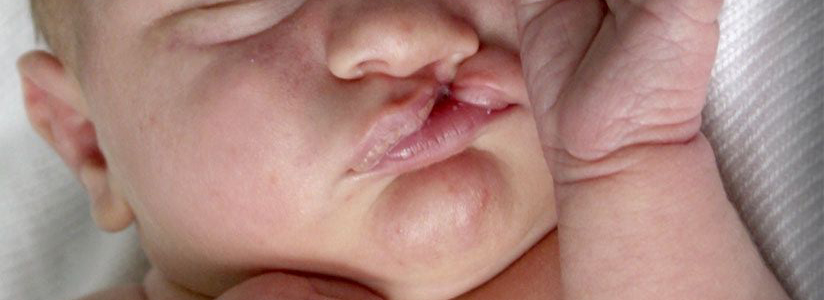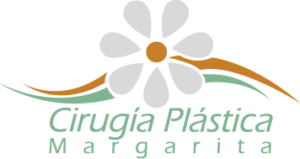
Lip and Cleft palate are birth defects in which the tissues of the mouth (lip muscles, gums and lining of the mouth (mucosa) do not join properly during the early stages of pregnancy, precisely between the 6th and 8th weeks of development fetal (gestation).
The head of a baby takes shape during the first 6 to 8 weeks of pregnancy. The bones and tissues in the upper jaw, nose and mouth, usually join (fuse) to form the roof of the mouth (palate) and the upper lip.
He Cleft lip (queiloschisis) and the Cleft palate (palatosquisis), are congenital malformations caused by abnormal facial development before birth, for this reason are considered “Birth Defects”.
He Cleft lip is the lack of union of the two halves of the lip. This separation often includes maxilla bone and gum. A child born with a separation in the upper lip is said to have a Cleft lip or harelip (Como sinónimo del labio de la liebre). (As synonymous hare lip). He Cleft palate or “cleft palate” is an opening in the roof of the mouth in which both sides are not united. Since the lip and the palate develop separately, it is possible to find babies Cleft lip, Cleft palate, or variations of both.
Incidence: is one of the most common birth defects and international statistics estimate that affects one in every 750 newborns .
Sex: It is much more common Cleft lip or lip Cleft palates in males, while the isolated is more common in the female.
The causes of harelip and cleft palate are not entirely known. It is now known that the lip Cleft palate, when not part of other syndromes, the cause is multifactorial and occurs as a result of an interaction, during the first three months of pregnancy, various factors such as:
-
- Heredity, the heredity factor is present in 20 to 25% of cases, as the dominant factor. It occurs mainly in families with a history of this abnormality in a parent, another of the children or an immediate relative.
- Genetic Factor, this factor describes the LPH as a characteristic of many syndromes. Most of these syndromes present with Cleft palate aisland that does not involve the lip and it is estimated that less than 3% of these cases.
- Environmental factors, we can mention infectious diseases sustained during the first trimester of pregnancy, such as rubella, others are physical agents among which are radiation (these may or may not produce malformation according to the intensity, duration and frequency exposures of pregnant women), smoking, use of drugs not prescribed and contact with chemicals.
- Nutritional factors: deficiency of vitamin B can cause alterations of organ formation (organogenesis), appearing malformations of palate division type
.
- Stress.
- Other factors, problems with blood supply to the affected area, any mechanical disturbance in which the size of the tongue prevents the binding of parts, substances circulating in the body as alcohol, drugs or toxins.
Multifactorial inheritance explains lip or transmission Cleft palates unilateral and is very useful for predicting the risk of incidence of this anomaly among family members of an affected individual. But it can also occur in families with no history already mentioned.
Cleft upper lip can range from a small glitch in the upper lip to a complete groove extending to the bottom of the nose. The upper gum may be involved as well. Often they cause an abnormal facial appearance and severe functional impairment of speech, chewing and swallowing.It may affect only the lip and gum or spread back through the hard and soft palate. The profile is concave and this is due to collapse exists in the upper gum; the jaw is stuck.He Cleft palate It may involve only the soft tissues of the back of the roof of the mouth (soft palate) or extend towards the front of the mouth (hard palate) affecting one side or both sides of the palate.
This anomaly may occur in the following ways:
-
- Cleft lip unilateral: cleft lip only and may vary greatly, from mild (notch lip) to severe (large opening from the lip to the nose).
-
- Unilateral incomplete: when the slit does not extend to the nose
.
-
- Unilateral full: When the slit extends to the nose
.
-
- Cleft lip bilateral full: when the cleft lip commits both sides and extends to the nose
- Cleft lip unilateral: cleft lip only and may vary greatly, from mild (notch lip) to severe (large opening from the lip to the nose).
.
- Cleft palate and lip primary: addition Cleft lip It is affected upper gum.
- Secondary cleft palate: the slit is located in both hard and soft palate.
- lip and Cleft palate complex: when the groove is in the lip and palate primary and secondary.
Pfor better results in the treatment of this birth defect is best early diagnosis with a “team approach”. Babies born with cleft lip or Cleft palateThey may need the competition of various medical specialists to correct the problems associated with the cleft. In addition to a maxillofacial surgeon and a plastic surgeon to repair the cleft, these infants may have feeding problems with their teeth, their hearing, speech, and psychological development as they grow. Usually the medical team that treats your baby should have the following specialists:
- Geneticist, helps families understand if some conditions are hereditary (if they come in the genes) and provides proof to family members so they understand what is the risk in the family to have children with similar problems.
- Pediatrician, these children should be examined more carefully than a normal child as well as the lip or cleft palate can find other complications such as: congenital heart defects and limb defects.
- Pediatric dentist is very important to help newborn babies with this malformation. Having the Cleft palate food hampers so some doctors recommend an orthopedic device that acts as the palate closing the abnormal space and provides support for the suction of food (at the same time stimulates bone growth of the upper jaw). Parents should learn to feed your baby and take great care and patience, because food can go into the airways and cause suffocation.
- Psychologist, their role is important as supportive therapy for these children.
- Otorrinolaringologo: Children with Cleft palate They are particularly prone to ear infections because the cleft can interfere with the function of the middle ear. To allow adequate drainage and ventilation, the specialist may recommend that you place a small vent tube in the eardrum.
- Maxillofacial Surgery, Oral Surgeon and orthodontist: It is not uncommon for a child’s growth, altered by the crack causes problems in the development of the upper jaw, teeth and nose. It is therefore necessary to monitor its development and control the eruption of his teeth. Over the years often they need orthodontics (to monitor the jaws are properly aligned and well implanted teeth); at the end of growth adjustments will be made in the shape of the nose, occlusion and scar lip.
- Speech therapist and speech therapist: Children with Cleft palatedefects in speech and language therapist who will teach them to speak properly.
Treatment for these abnormalities includes surgery and a comprehensive approach to a team of specialized doctors to help with the multiple complications that might arise. Specific treatment will be determined by your child’s physician based on:
- The age of the baby or infant, overall health, and medical history.
- The specific characteristics of the anomaly presents.
- The baby has tolerance for specific medications, procedures or therapies.
- The commitment to other parts or systems of the body.
- Your opinion or preference.
Surgery harelip It can be done from the time of birth, although most surgeons perform between 3 to 6 months depending on the weight of the baby.
He Cleft palate or cleft palate is usually corrected when the baby is one year old, but it is important orthodontic work starts just born baby. For this kind of film that covers the hole in the palate, called splint is used. The splint is inserted into the mouth to replace the palate if the baby does not have it or have it incomplete. Thus, the mouth of the nose is isolated and supports the tongue when swallowing food, otherwise food can back out through the nose, because the muscles are wrong and when the baby suckles are driven upward.







